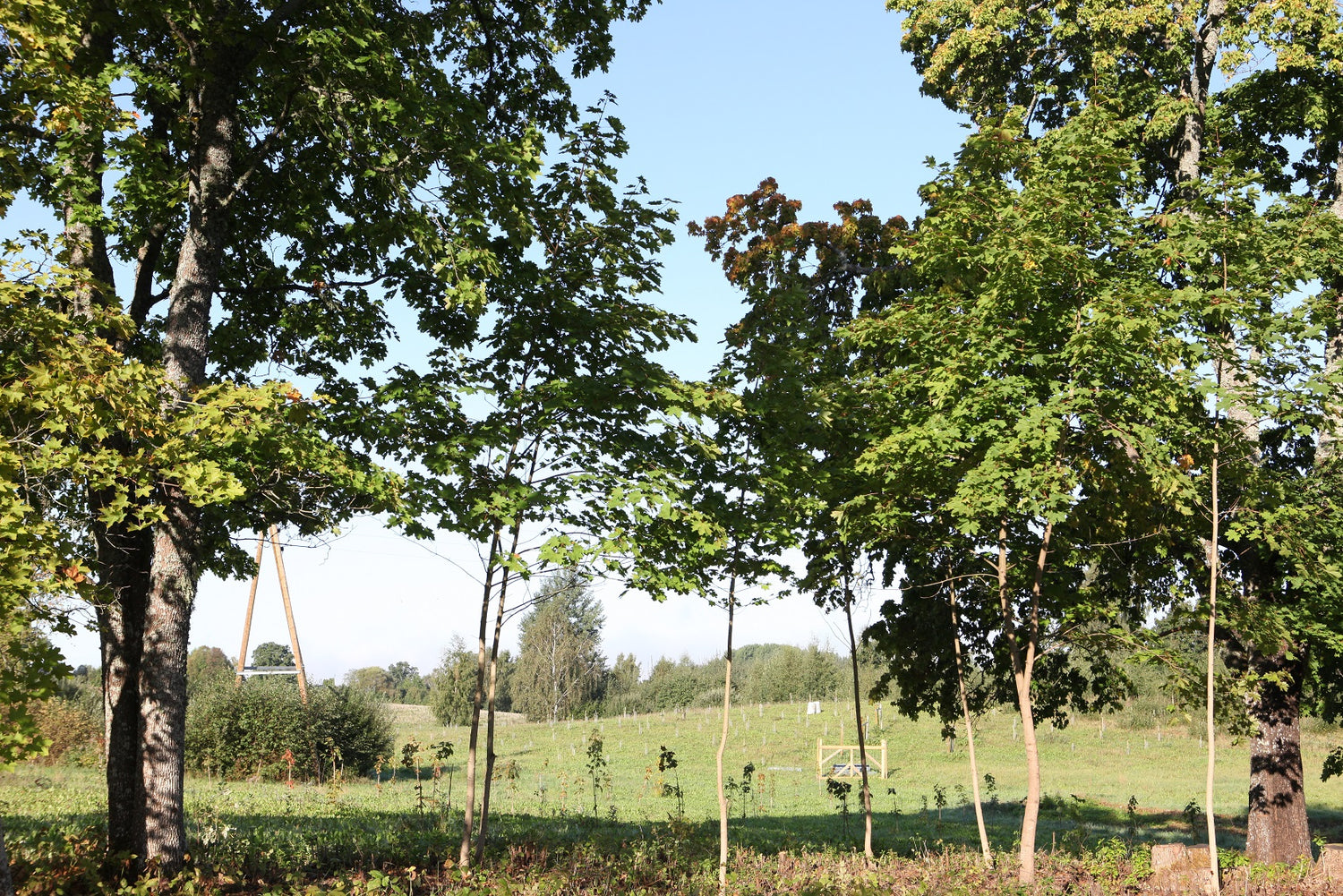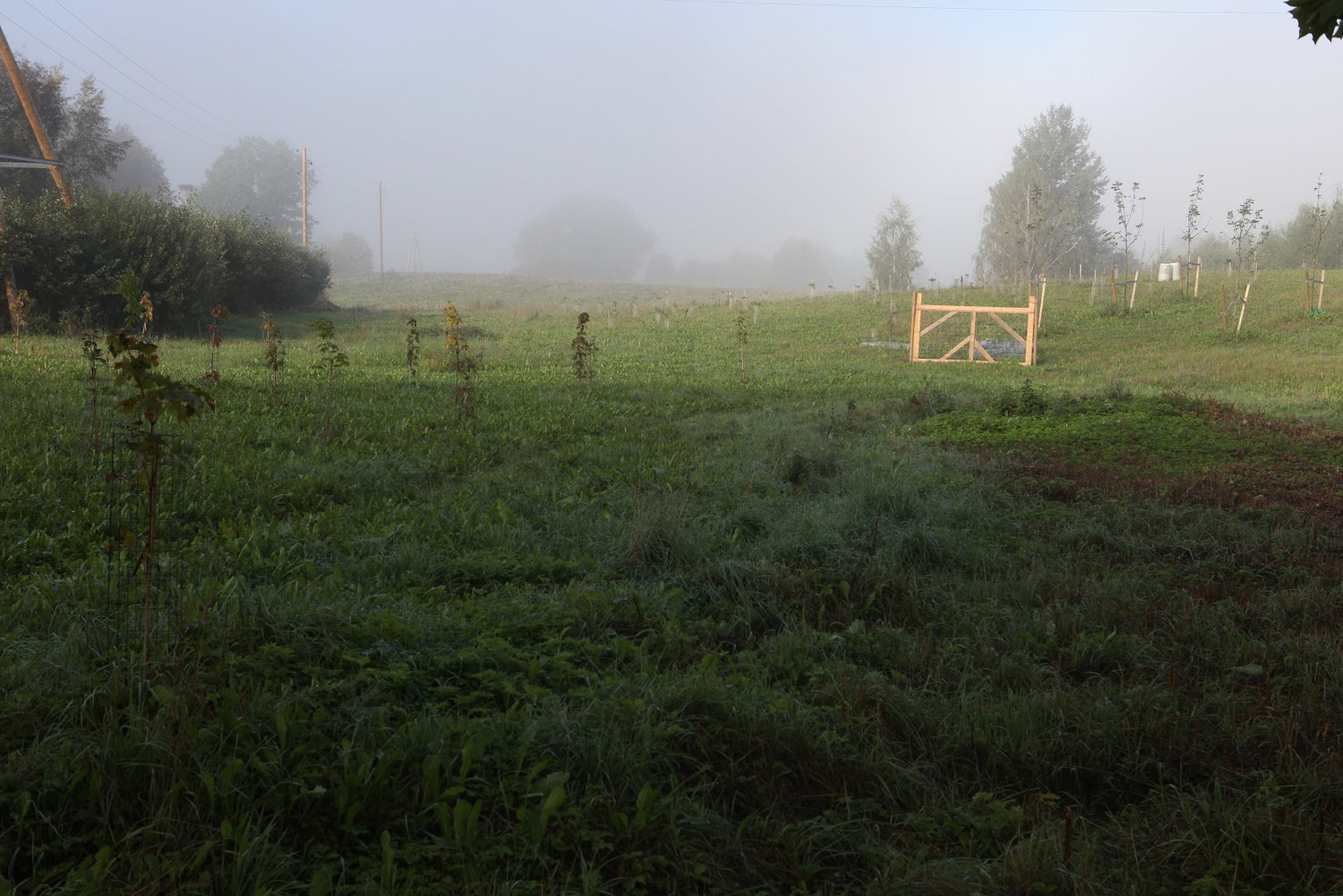Initially, our visitors will be able to enjoy the picturesque view of the park and growing trees, as it will take at least 15 years for them to reach a girth that allows to drill them and collect sap. Possibility to visit the park and see and hear about all the tree varieties already planted in the park is possible from late spring to early autumn. But participation in the process of collecting the sap - only after many years.
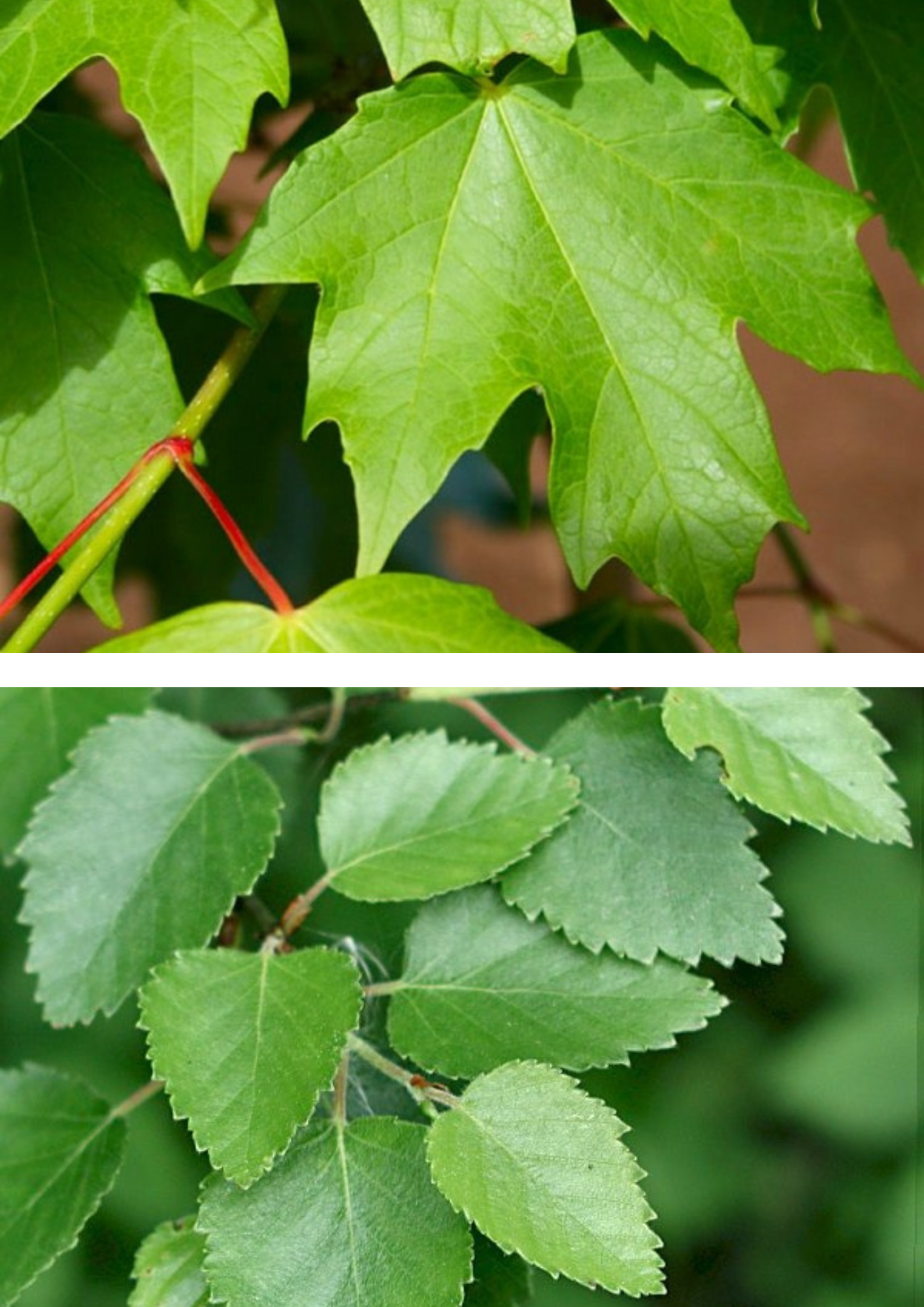
Sugar maple (Acer saccharum)
The first ones in the park where 100 sugar maples. They were planted in a way to form a 'sugar alley'. Their homeland is North America, where sugar maples are widely used to collect maple sap. It is the maple leaf that is the symbol of Canada. It is also featured in the Canadian flag.
Outdoor birch (Betula pendula Roth) and bog birch (Betula pubescens Ehrh)
Then 200 Latvian outdoor birches and 200 bog birches followed. Both of these types of birches are typical to the Latvian landscape. Visually, they are relatively easy to distinguish by the shape of the branches. The branches of the outdoor birch hang down, while the bog birch tend upwards.
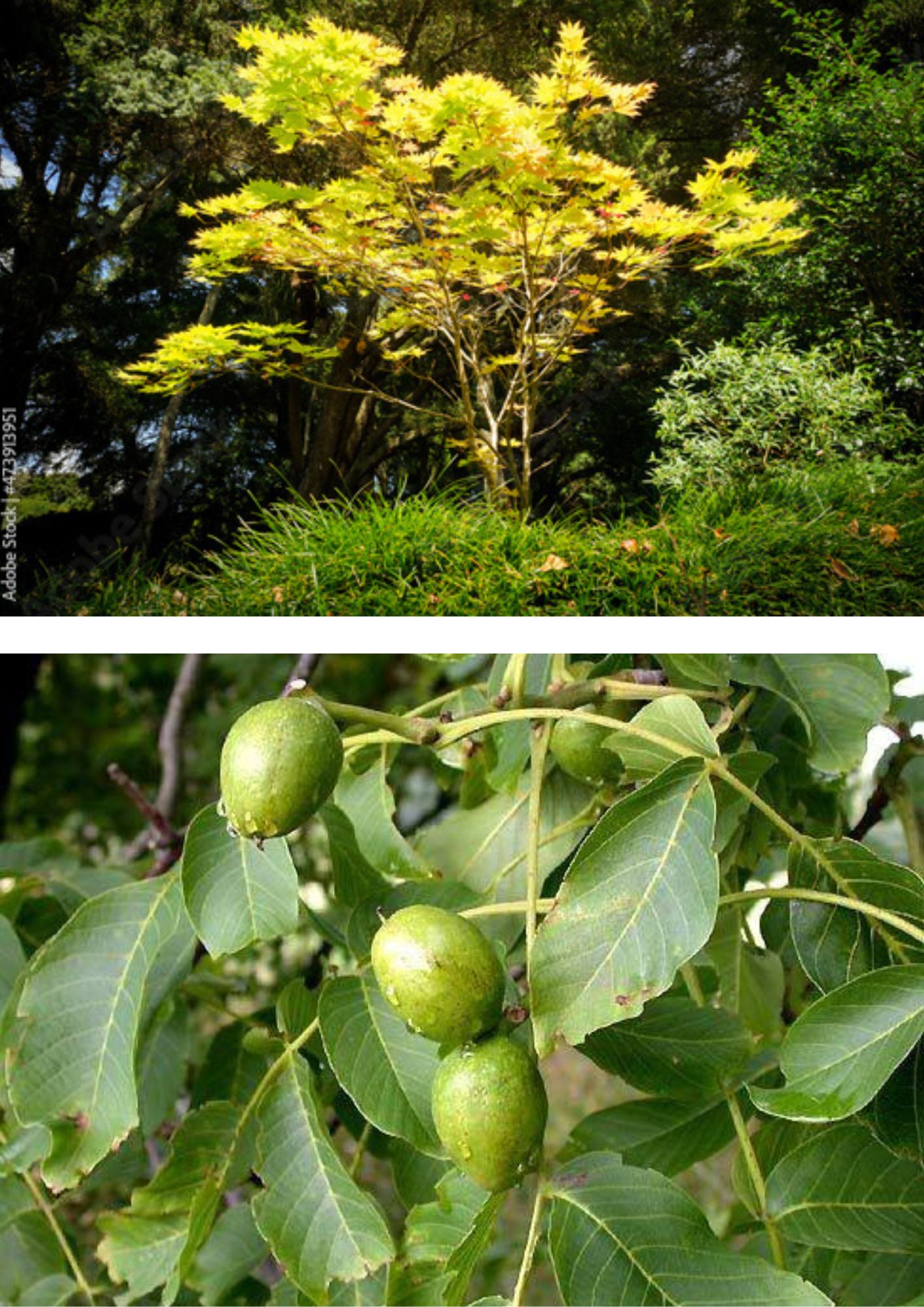
Korean maple (Acer pseudosieboldianum)
This maple is an upright, deciduous, small tree or large shrub that matures over time to 15-25’ tall with a similar but sometimes wider spread. It is native to forested areas in Korea and China. Medium to dark green leaves turn excellent shades of yellow, orange and red in fall. Purple flowers bloom in spring.
Greek or royal walnut (Juglans regia)
In turn, Greek walnut's natural habitat is the Balkans, Western Europe and Turkey. Walnut is a summer-green tree that reaches a height of 3-7 meters and a width of 3-4 meters. The leaves are green, compound, turn yellow in autumn. There are both female and male flowers on one tree. Self-fertile. Fertility is better if there is warm weather during flowering. Blooms in May, June.
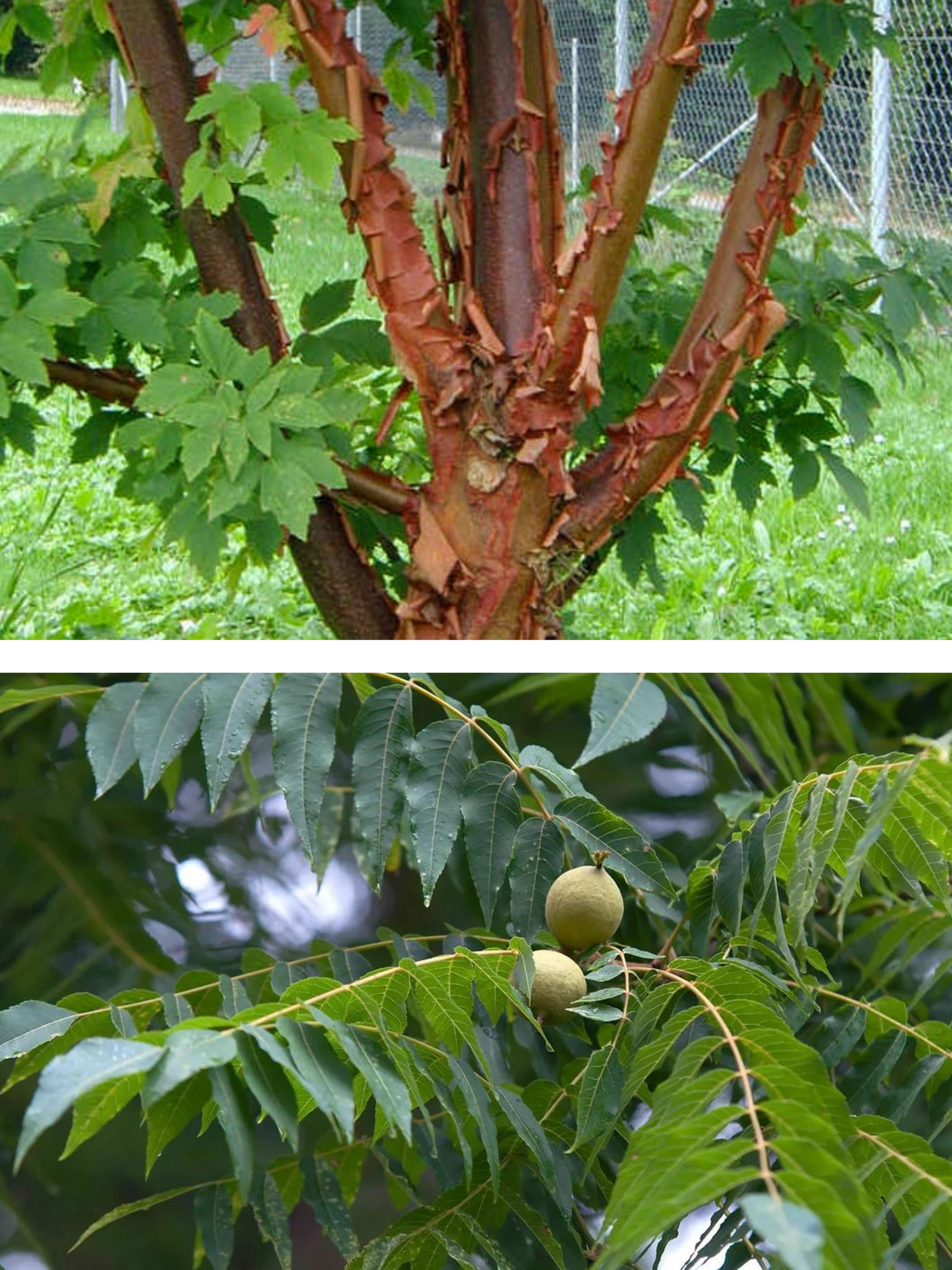
Paperbark maple (Acer griseum)
Also called Cinnamon maple, it is distinguished by its unusual, brown-red bark. Due to the color of the bark, the maple looks even more impressive in wintertime than in summer. This maple is native to central China. Foliage is green, orange or bright red during fall. The crown is round and wide. Height 6-8 m, width 4.5-7 m. Likes to grow in a sunny place. Pronounced peeling of the bark, that gives the maple a decorative value, which is why it is a popular greenery plant in Europe. Maple's title comes from the Latin word 'griseus', meaning gray, referring to the color of the lower edge of the leaf.
Black walnut (Juglans nigra)
On A small hillock in the southern part of the park there are about 100 black walnuts (Juglans nigra). Black walnut can reach 18 - 20 meters in length, it has round, about 5 cm wide fruits. Black walnut is native to North America and is suitable for growing in the central and western climates. The tree has green, 25-50 cm long and tufted leaves. The shell of the black walnut fruit is thick, difficult to break and the nut has a peculiar, sharp taste. In turn, the sap is as sweet as maple sap, only about 2-3 times less in amount. The lemon-nut flavor makes the sap distinctive and tasty.
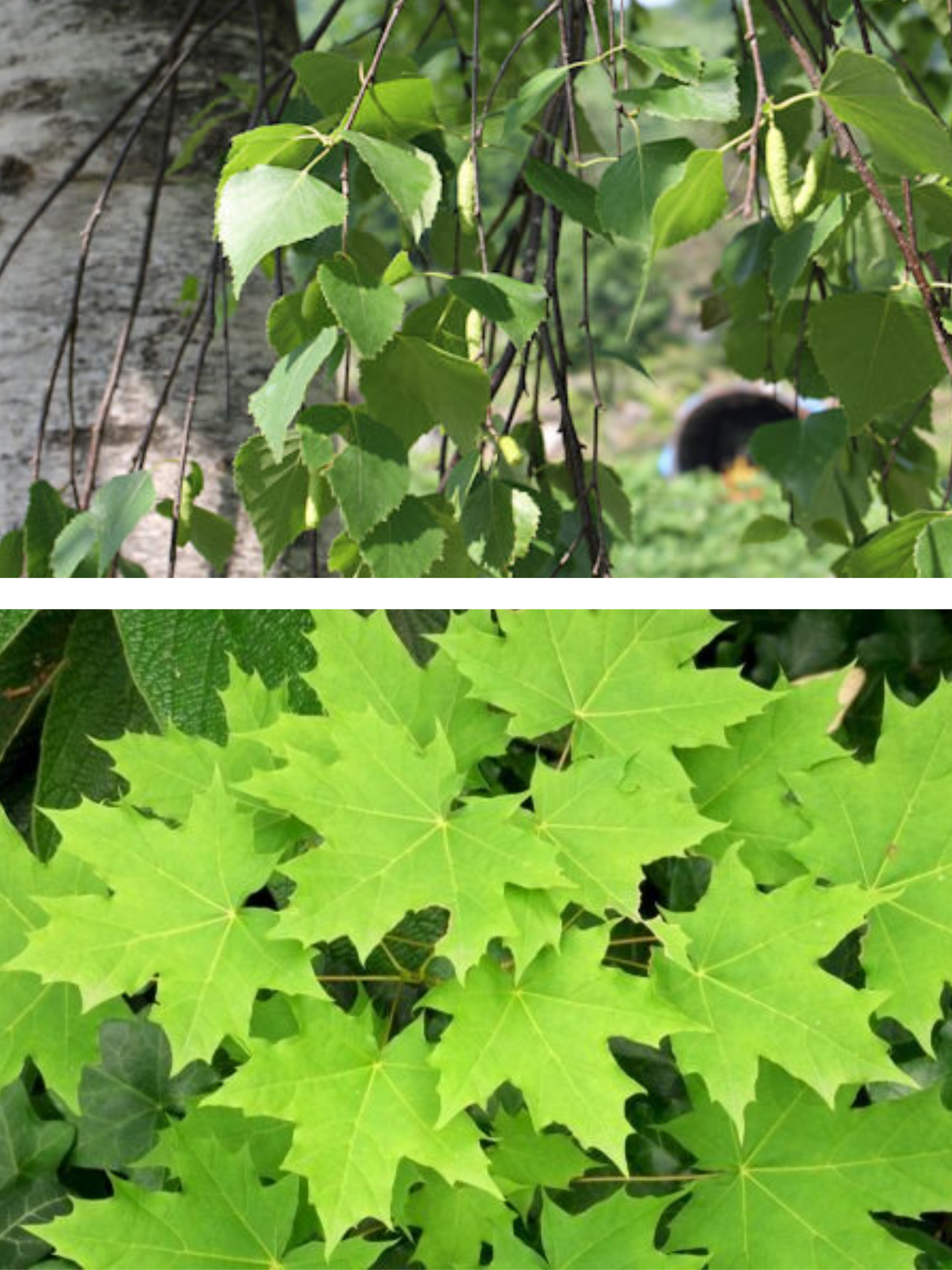
Japanese white birch (Betula platyphylla)
Originated in Asia: Japan, China, Korea and Russia -in Eastern Siberia. The tree is evergreen, reaches a height of 30 m. The bark is white. Grows on mountain slopes as a pioneer species after fires. Important role in ecosystem maintenance. Used for making furniture, veneer, etc. It is widely used in medicine, as a vitamin plant against scurvy. Used for gathering sap.
Common or Norwegian maple (Acer platanoides L.)
There are 10 old Norwegian maples along the side of the park. In the future we are going to plant another 100 of the same kind. Canadian sugar maple sap has a sugar content of about 3%, while Norwegian maple sap has a lower sugar content of about 2%.
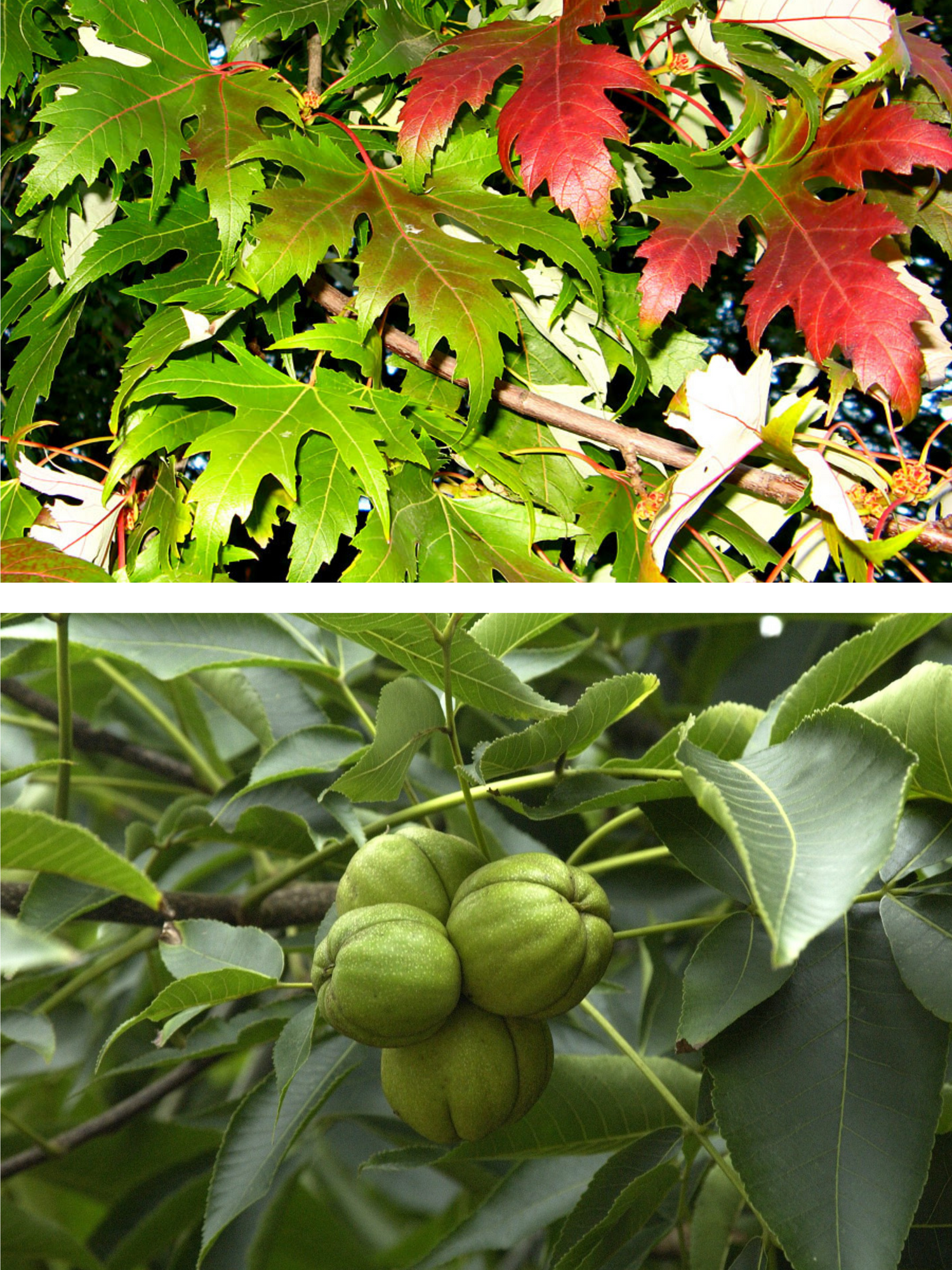
Silver maple (Acer saccharinum)
Creating this park is a kind of an endless process. New trees are being planted every year. In the spring of 2019, with the support of JSC Latvia's State Forests, we planted 50 Silver maples. Their homeland is North America. It reaches a height of 15-25 meters. Trees are often planted in greenery in Latvia. In North America, this species is not popular for gathering sap because the sap contains less sugar than the sugar maple. This is one of the 2 maple species whose seeds mature in spring instead of autumn and are immediately germinating.
Ultra Northern pecan
(Carya illinoinensis)
Common in North America in the southeastern regions, from southern Wisconsin to Texas. Can withstand low temperatures. These trees can reach the age of 300 years and more than 30 meters in height. The tree has delicious, edible nuts. Pecans can start producing at age 6. Nuts ripen in autumn and are usually a large crop. Pecan trees are often pruned, it is best to do it at the end of winter. Trees should be planted at a large distance from each other because of the wide crown of branches. In the USA and Mexico it is grown for industrial nut production.
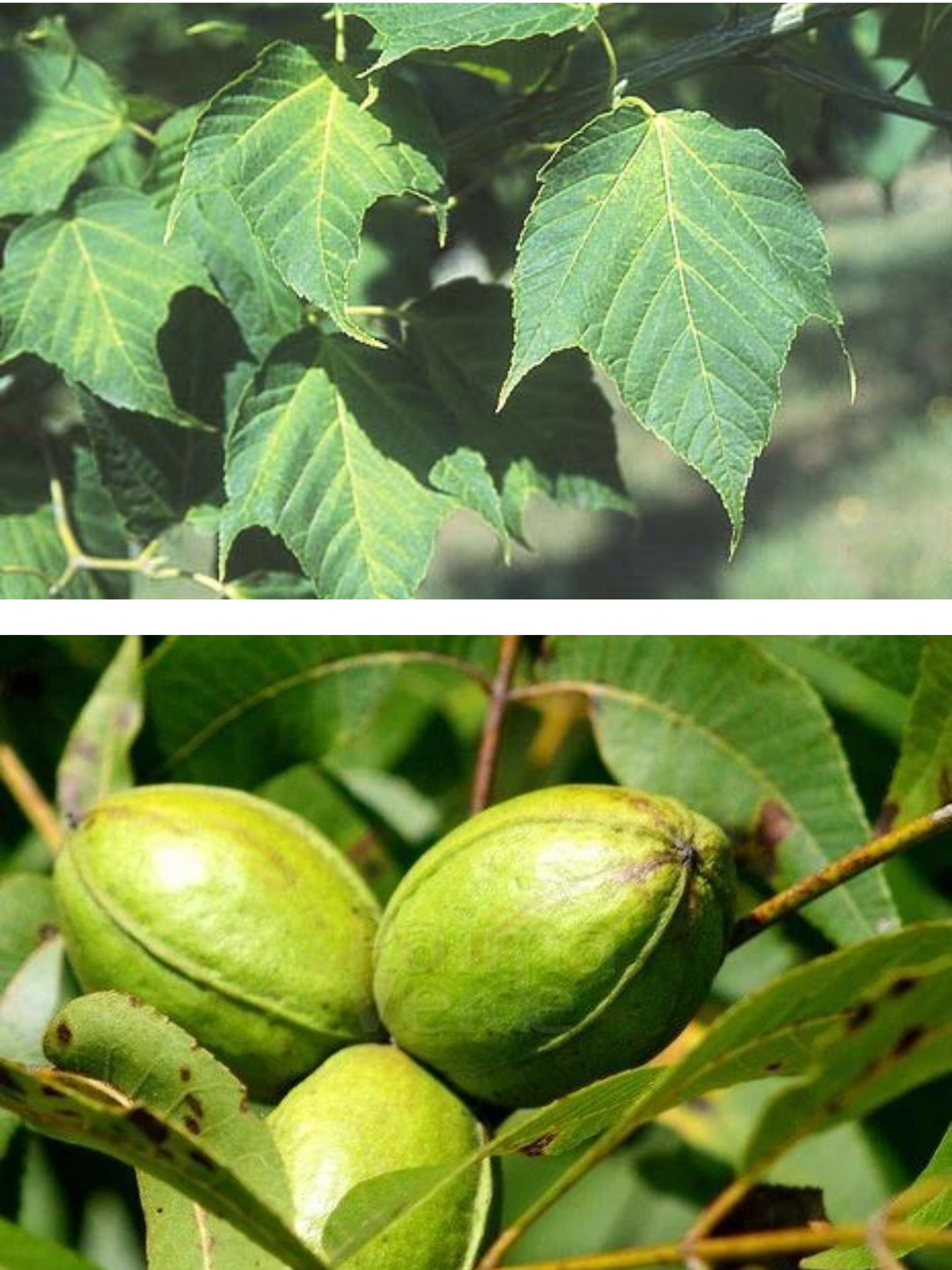
Green bark maple (Acer tegmentosum)
In 2020 Green bark maple, Yellow birch, and Greek or Royal walnut were planted in the park.
Green bark maple's natural habitat is mixed coniferous forests in the mountains of northeastern China, the Korean Peninsula, the Amur region and the coastal region of Russia. Now we will see how it grows in the flat and clayey countryside of Vidzeme. The tree grows up to 15 meters in height.Shagbark hickory (Carya ovata)
Planted in the park in 2023. This nut tree is common in the eastern United States and southeastern Canada. Widespread in Europe since the 17th century. Mostly used for decorative plantings and botanical gardens. The tree can reach a height of 30 meters, slow growing, life span more than 400 years. A characteristic feature is the structure of the bark: it is gray, with vertical, long cracks. Nuts are 3-4 cm long with a thin shell and sweet taste. The tree begins to produce nuts extensively at about 40 years of age. Frost-resistant, can withstand temperatures down to minus 40 degrees. Since the wood is hard, handles, ploughs, skis, bows, drumsticks were made from it. The bark was used to give flavor to maple syrup.
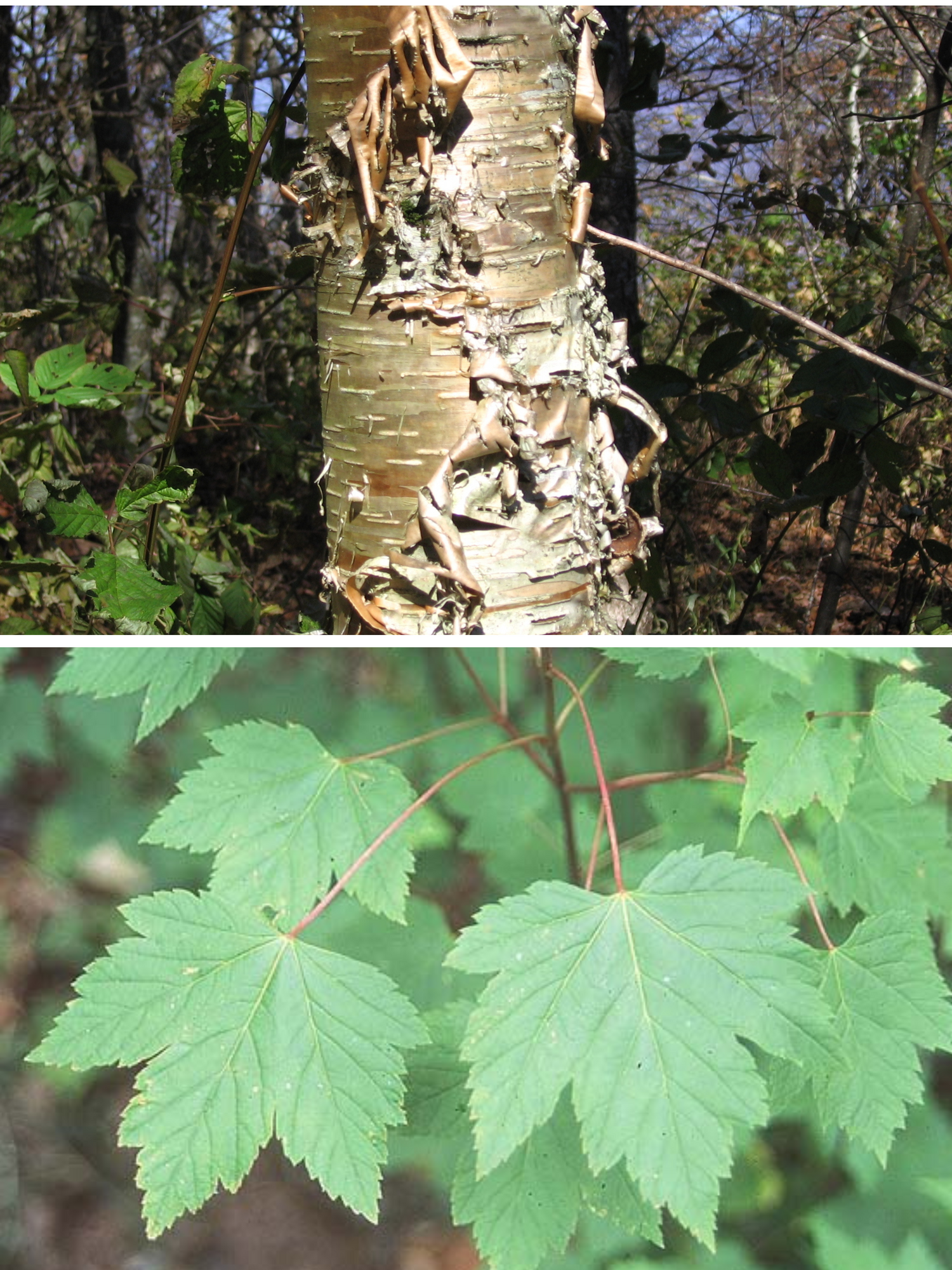
Yellow birch (Betula alleghaniensis)
Originates in North America. One of the largest species of birch, can grow up to 25 meters, and live up to 150 years. The typical feature of this birch is the yellow bark. Widely used as timber. The North American Indians used it in healing, e.g. blood purification. Dishes and boats were made of wood and it was used in the construction of houses. They mixed yellow birch sap with sugar maple sap thus making a pleasant drink. Yellow birch is the official tree in the province of Quebec.
Rocky Mountain Maple (Acer glabrum)
The species is common in coniferous, less often deciduous forests and river valleys of the Rocky Mountain slopes of North America. A large shrub or small tree, up to 8 meters high. Bark greyish brown, sometimes slightly furrowed. A winter-hardy species. Tolerates partial shading. Resistant to diseases and pests. Decorative species for greenery. Native Americans used the strong stems of the tree to make snowshoe frames and shooting bows.
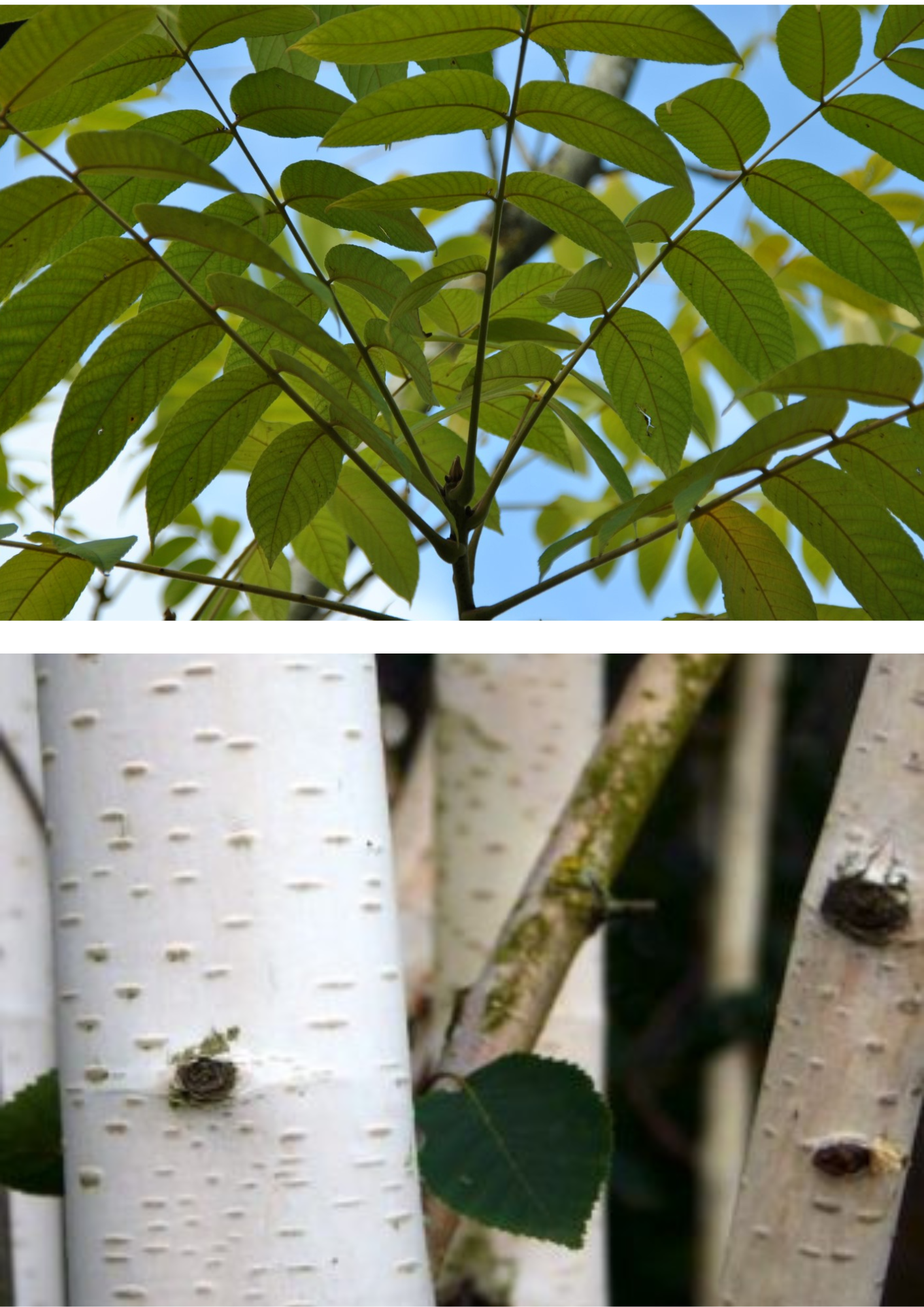
Japanese walnut (Juglans ailantifolia)
Walnut is native to Japan and Sakhalin, but is also common in the USA and Canada. It was introduced to Europe around 1860. Very fast growing. In good conditions, it can grow up to one and a half meters per year. Resistant to frost, tolerates up to -30C. The lifespan of a tree can reach 200 years. This species has valuable fruits and the tree itself is very decorative, so it is widely used in park plantings. 10-120 kg of fruit can be collected from an adult tree. The fruits have a "heart-shaped" shape.
Himalayan birch (Betula utilis)
In 2021, Himalayan birch, Manchurian maple, Field maple, Stone birch, and Ash-leaved maple were planted in the park.
The Himalayan birch stands out for its white bark. It can grow up to 20 meters, although it is usually between 9 and 12 meters. Also known for its healing properties. Very resistant to frost.
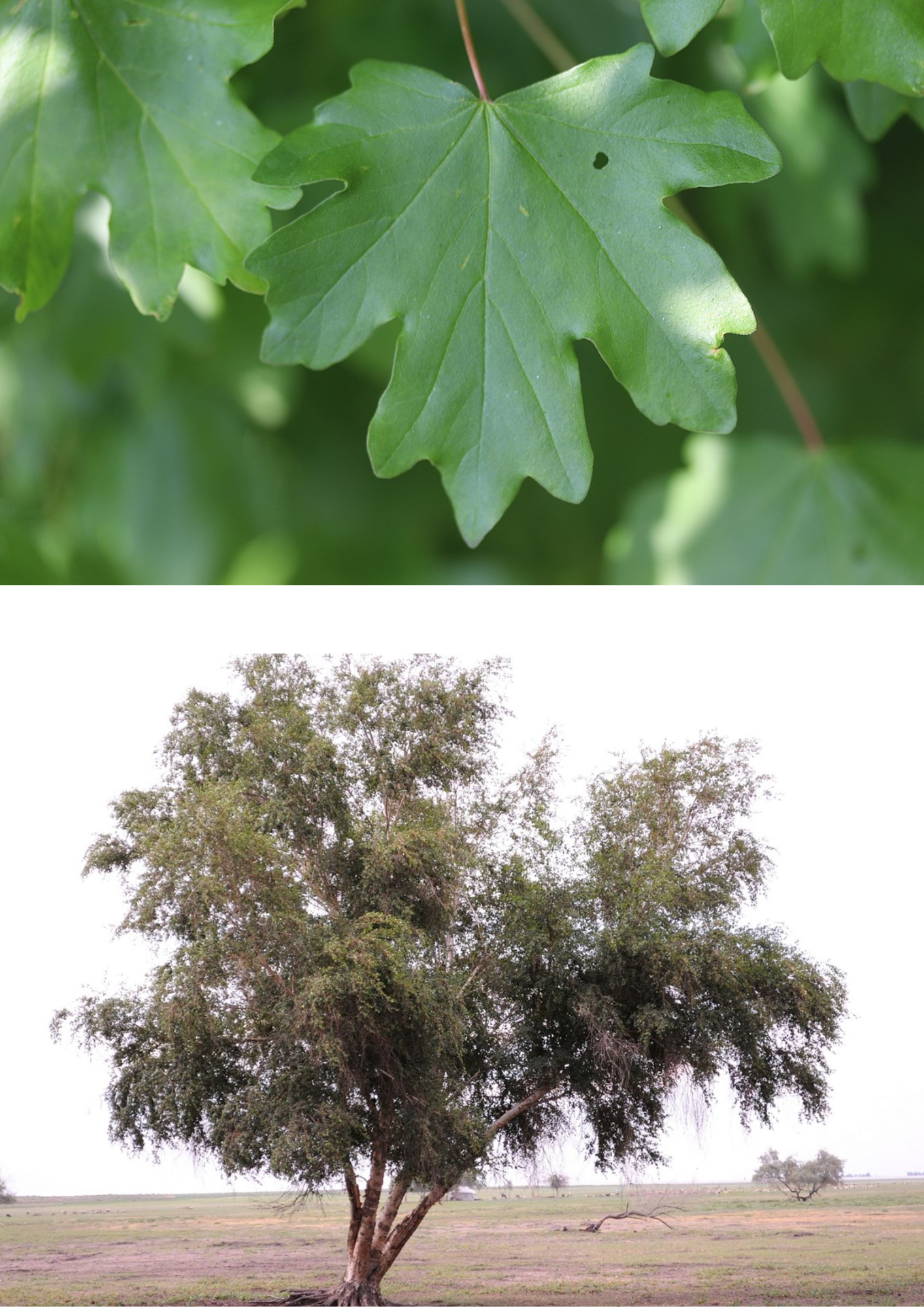
Field maple (Acer campestre)
Field maple is a tree or a large shrub, up to 10 meters high with a rounded crown. Bark is dark brown to gray, ribbed, often with corky growths. New browses are yellowish brown and thin. Widespread in central and southern Europe.
Small-leaved birch (Betula microphylla)
This birch origins come from China. Found in Kazakhstan, Mongolia, Russian territory (Altai, Sayani). Can reach a height of 6 m. They are mostly low, bushy trees suitable for planting in small gardens. Egg-shaped leaves. It features exfoliating grayish bark. In autumn the leaves turn yellow.
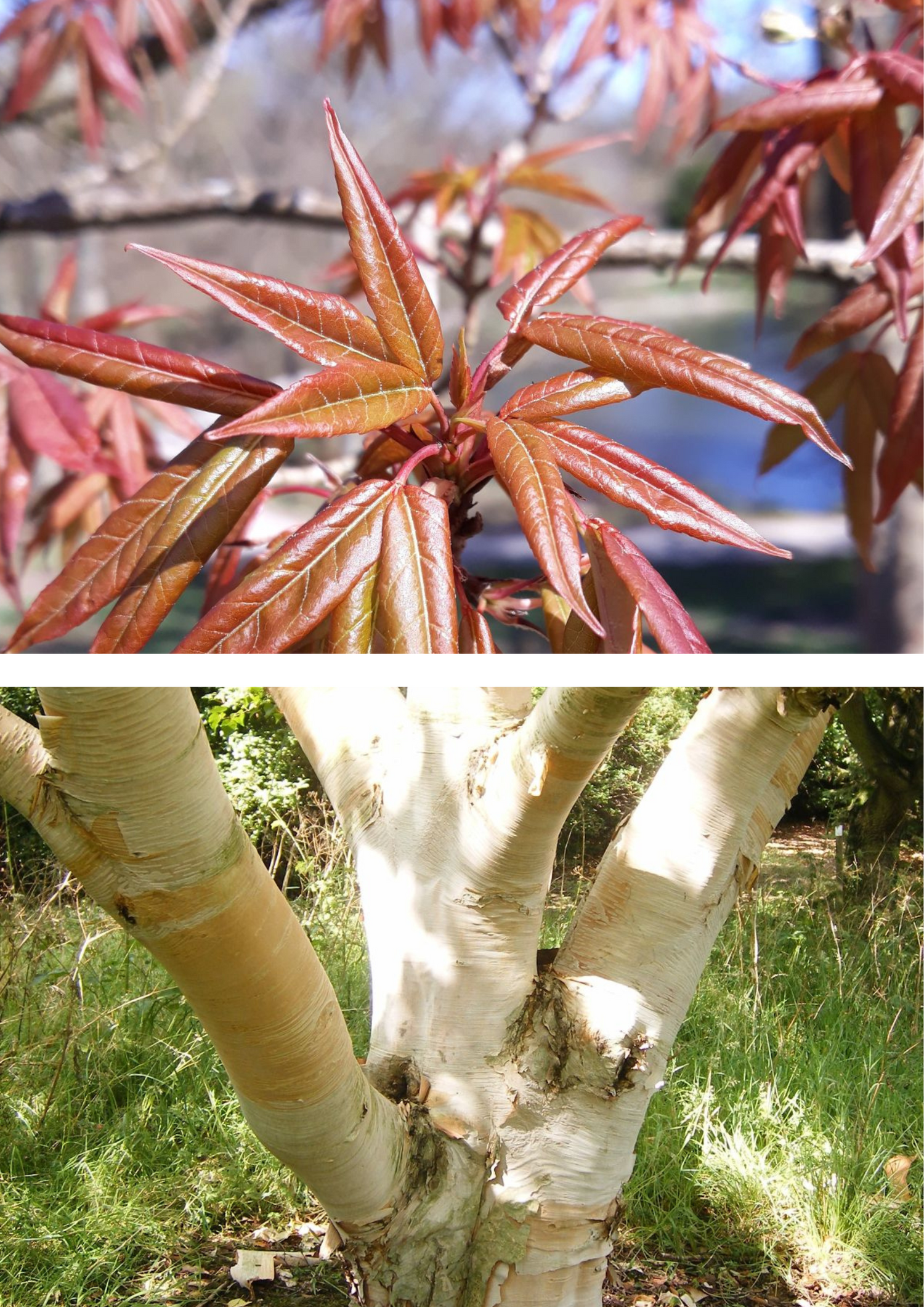
Manchurian maple (Acer mandshuricum)
Grows in Russia's Far East, North Korea, Northeast China, mountain forests, river valleys, along with other conifers and deciduous trees. Tall summer-green shrub or tree grows up to 10 (20) meters tall and 30 (60) cm in diameter. Overall frost resistant, but mostly browses can suffer from late frosts in spring and cold winters. Grows in sunny and partly shady places.
Stone birch (Betula ermanii)
Originates in the Asian regions of Japan, Korea, Russia, and the Sakhalin Peninsula. It differs from other birches with a gray bark that turns copper-colored, peeled, can sometimes be removed in sheets. Medium-sized birch, reaches a height of 20 meters. In summer leaves are dark green. They turn beautifully yellow in the fall. The tree tolerates frost. Widely used in street greenery in the UK.
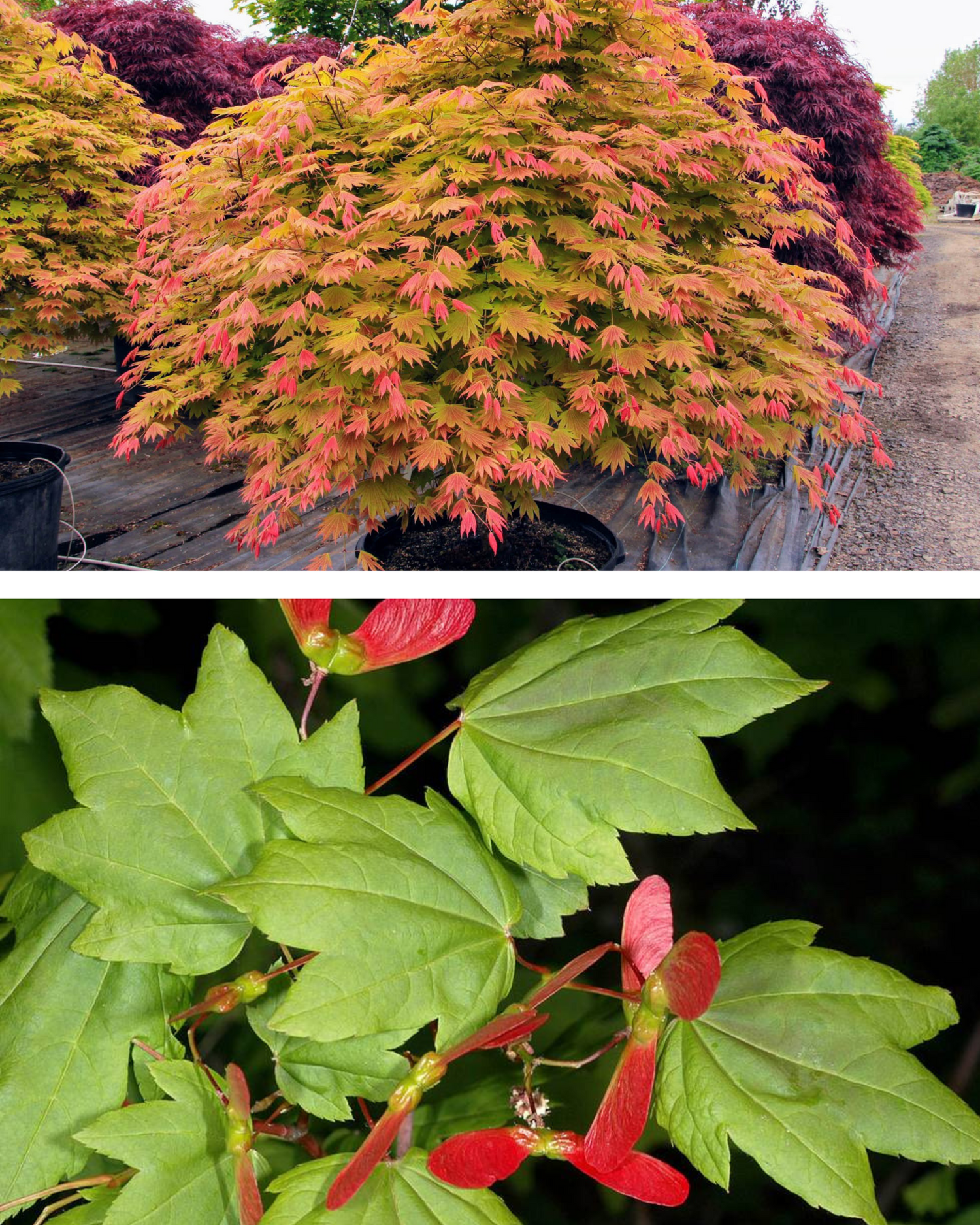
Shirasawa maple or Fullmoon maple (Acer Shirasawanum)
A typical common tree in Japan. Very decorative. This is a slow-growing species, growing as a large shrub or small tree 8-15 m high. The trunk bark is smooth in both young and mature trees. In autumn, the leaves turn from light yellow to dark red. This variety is widely grown for its gorgeous foliage that turns beautiful in autumn.
Vine maple (Acer circinatum)
Widespread in the northwestern part of North America. Maples of this species play an important role in maintaining the biodiversity of lowland ecosystems by enriching the upper soil layers and providing habitat for other organisms. The tree reaches an average length of 5-8 m. In rare cases it reaches 18 m. Lives 70-80 years. Sometimes the flexible maple branches bend and grow into the ground, forming a natural arch. This species is an important member of the forest ecosystems of the Pacific Northwest. In autumn, those trees that grow in the shade tend to turn pale yellow, those that grow in the sun turn orange or bright yellow. The local population used the branches of the round-leaf maple for weaving baskets and fish nets, as well as for firewood.
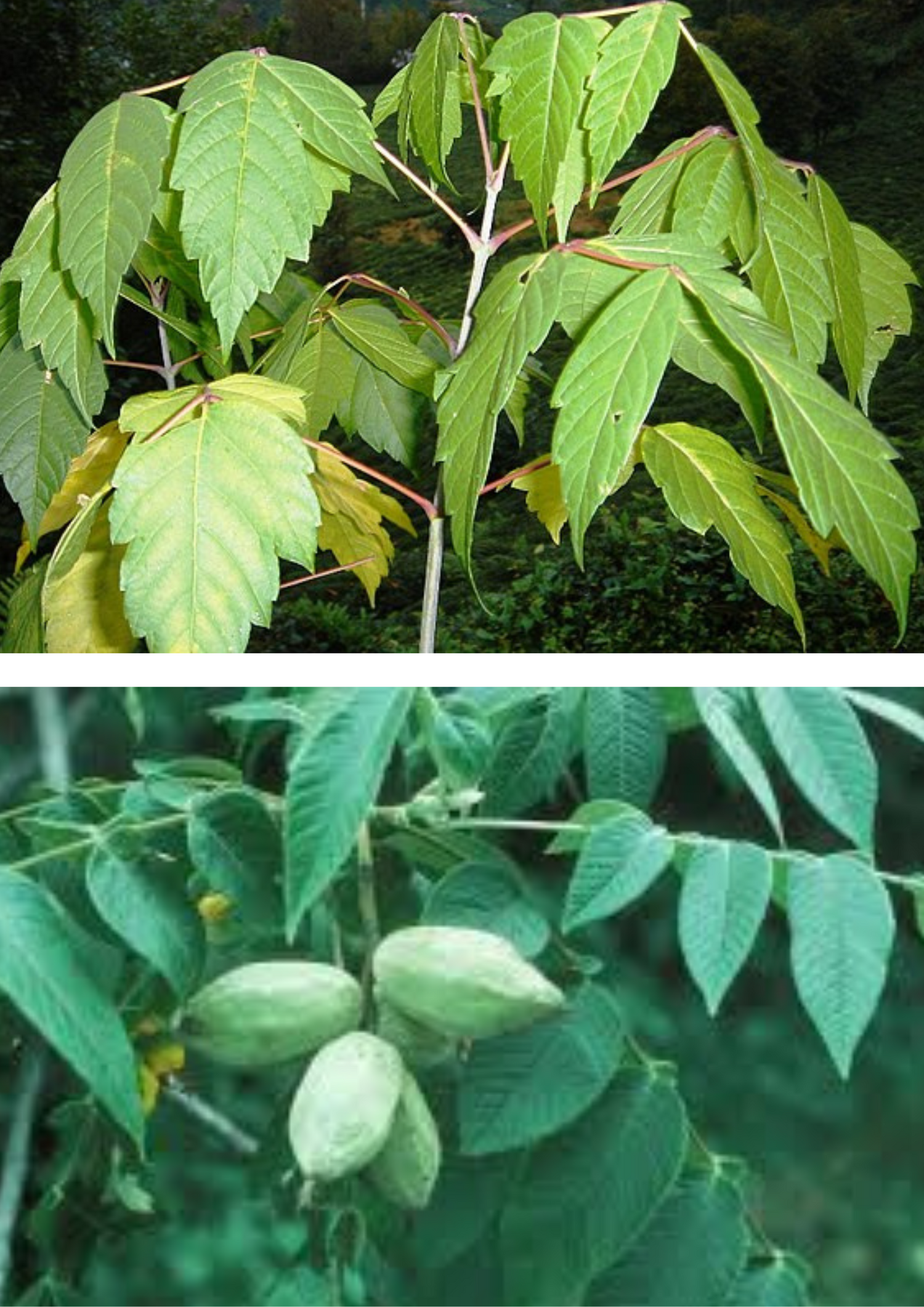
Ashleaf maple(Acer negundo L.)
The tree is native to North America. Medium-tall and fast-growing tree can reach up to 15 meters in height, lives only up to 60 years. Introduced to Europe in 1688 for planting in parks. At the beginning of 20th century was introduced to Latvia as an ornamental plant, in some places it went wild, becoming invasive. It differs from other maple species with its ash-like leaves. North American Indians used it extensively in crafting dishes, pipe stalks, used maple charcoal for tattooing, and burned wood in special rituals. The oldest whistle, found in North America and dating to the 7th century, was made of ash maple. The Indians made syrup from the sap of this maple.
White walnut (Juglans cinerea)
This walnut is common in the eastern United States and southeastern Canada. The specie is slow-growing, it can reach 75 years of age. Grows up to 20 meters. The bark of the tree is light gray. Walnuts are edible and the local natives have made butter-like oil from them, which has been used for various purposes. As long as the nuts are green and soft, they can be pickled. The syrup is made from the sap. Bark and nut shells used to be used to dye fabrics.
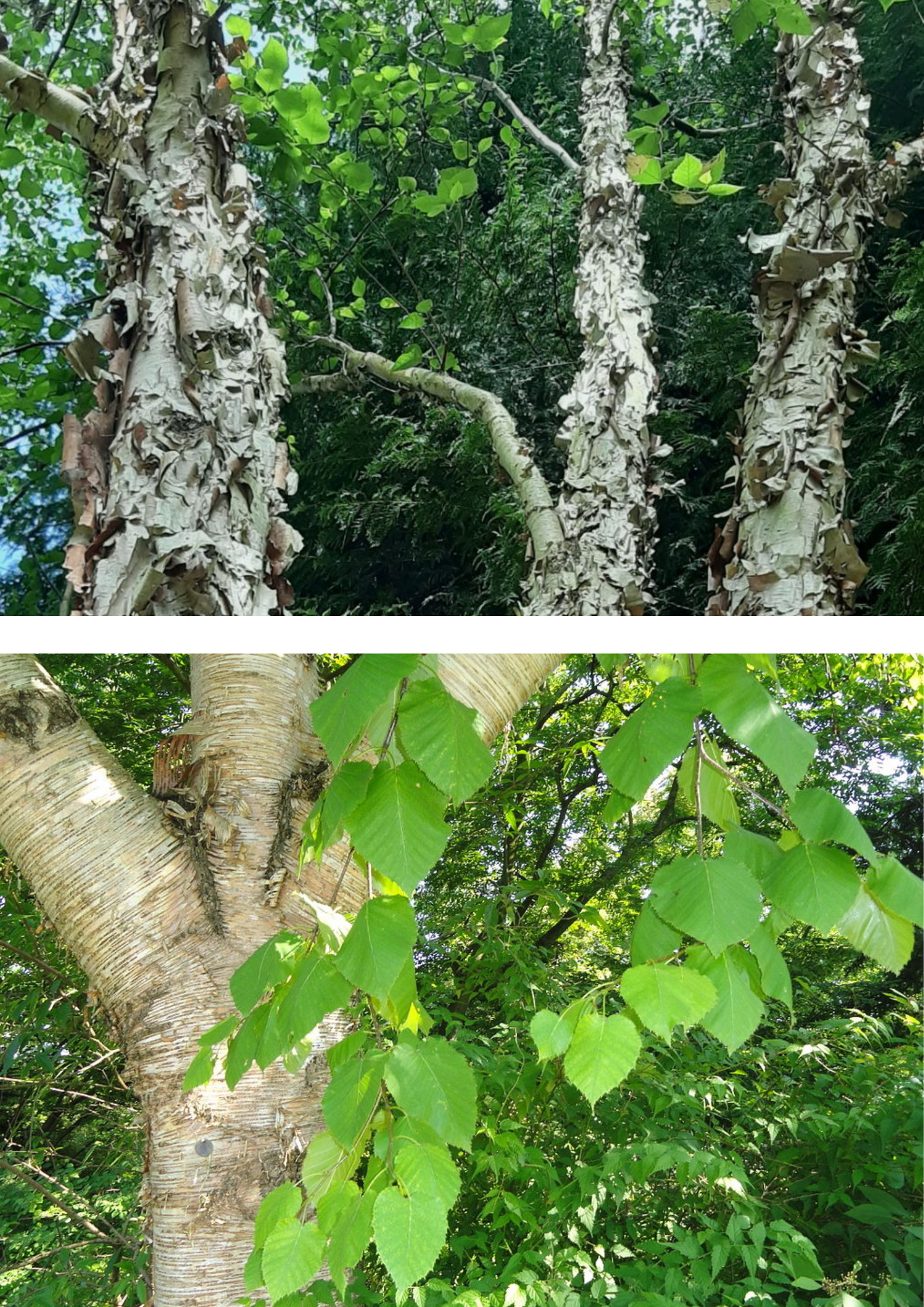
Asian black birch (Betula dahurica)
The place of origin of this birch is Northeast Asia. It is a medium-sized tree with a round crown of leaves. This birch is particularly known for its bright, fissured, gray-brown bark that peels off in shaggy, paper-like curls over the years. Perfect for planting in lawns or parks in small groups. It feels especially good in low wet places near ponds, streams. Tolerates drier soils than most other birch species.
Monarch birch (Betula maximowicziana)
The breed is found in the wild in Japan and the Kuril Islands. It was introduced to Europe (England) for the first time in 1888. In natural conditions, it reaches a length of 30 m, but in Europe it grows up to 24 m. The leaves are much larger than for other birch varieties. They can reach a length of 14 cm and are heart-shaped, similar to linden leaves. A fast growing tree. High-quality wood used for furniture and paper production.
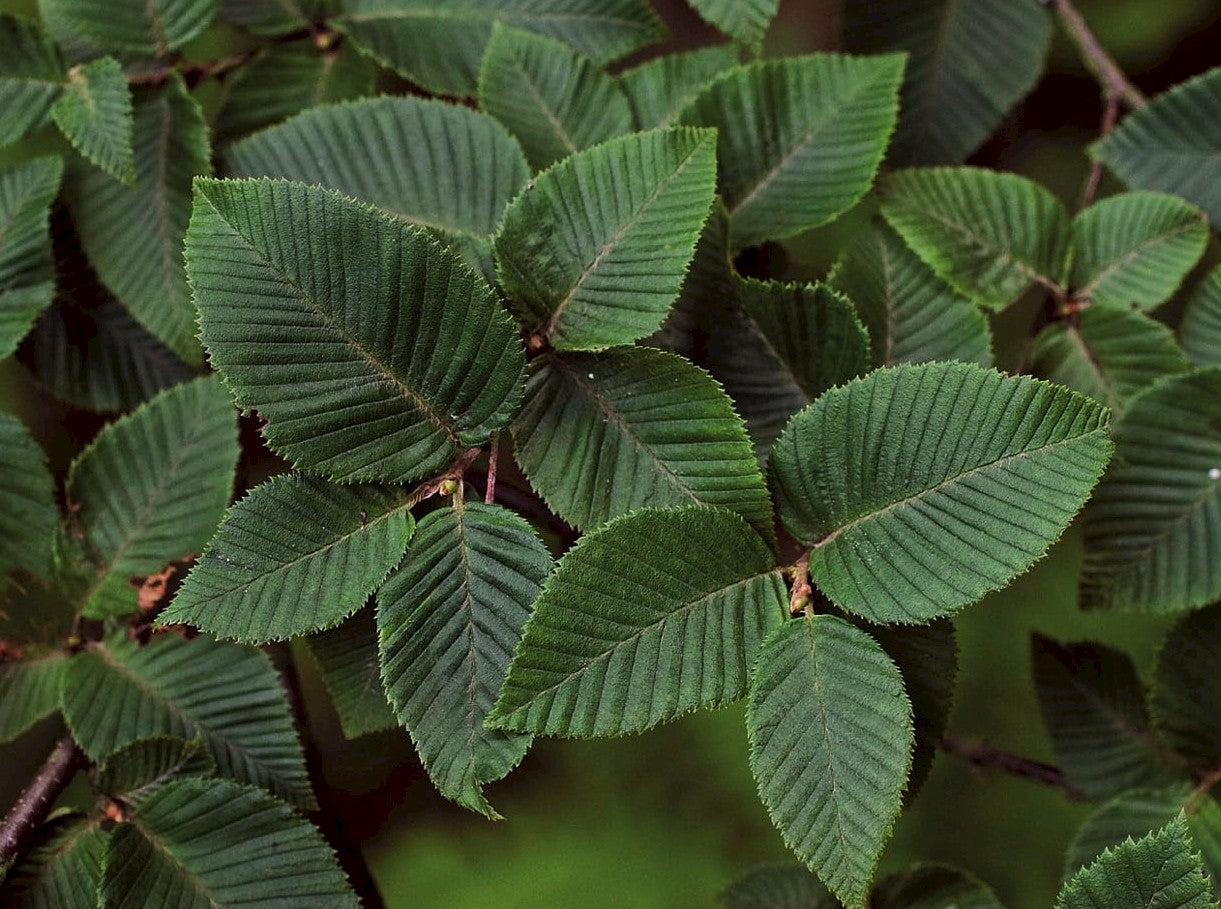
Chichibu birch (Betula chichibuensis)
Chichibu birch is common in Japan. It grows only in nature on the island of Honshu. Very rare, included in the International Red Data Book. In 1993, only 21 trees were found in the wild. The tree reaches a height of 8-10 meters. The reproduction of this species is ensured by the fact that the two trees must be next to each other for pollination to happen. This species of birch are now grown in many of the world's botanical gardens.
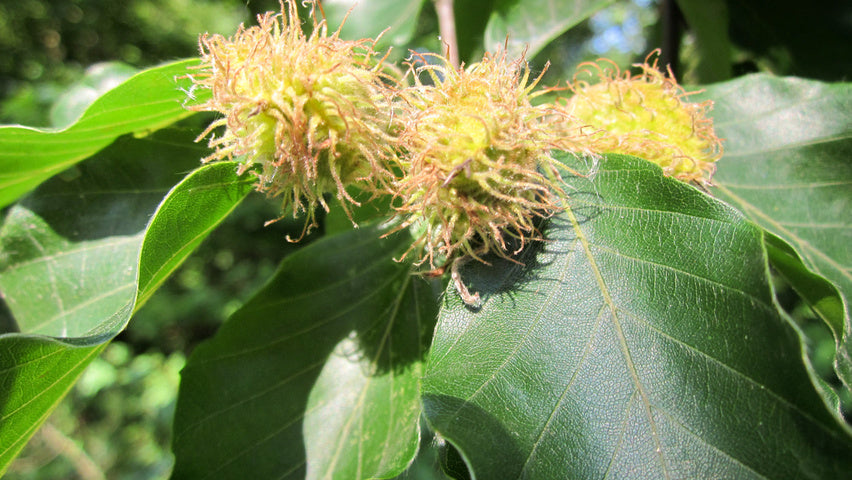
Beech (Fagus sylvatica L.)
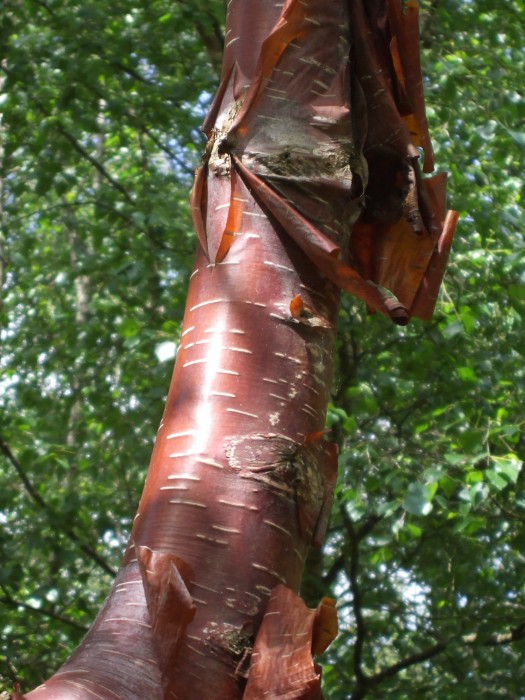
Beech birch (Betula grossa)
Beech birch is spread in Japan. The tree was introduced to the West in 1896, but its cultivation is still not widespread. Summer green, up to 25 meters tall. The bark is dark brown to almost black, smooth for younger trees and cracked for older ones. Browses are bare, with sparse warts, yellowish-brown.
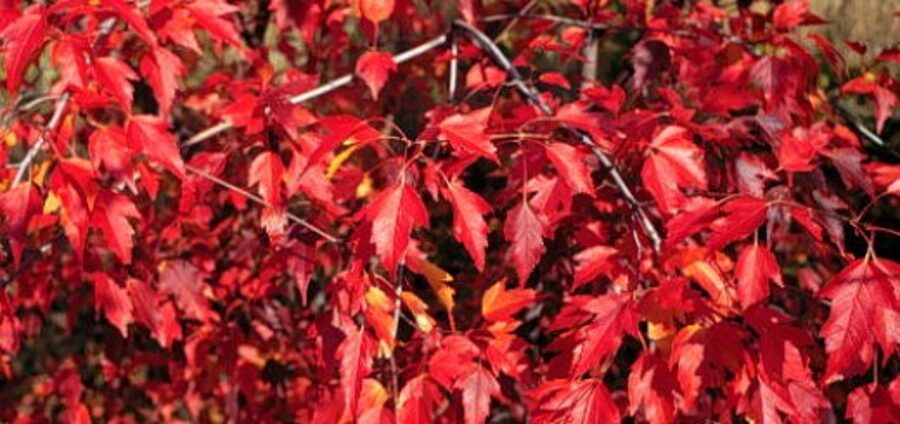
Birch-leaf maple (Acer tetramerum var. betulifolium)
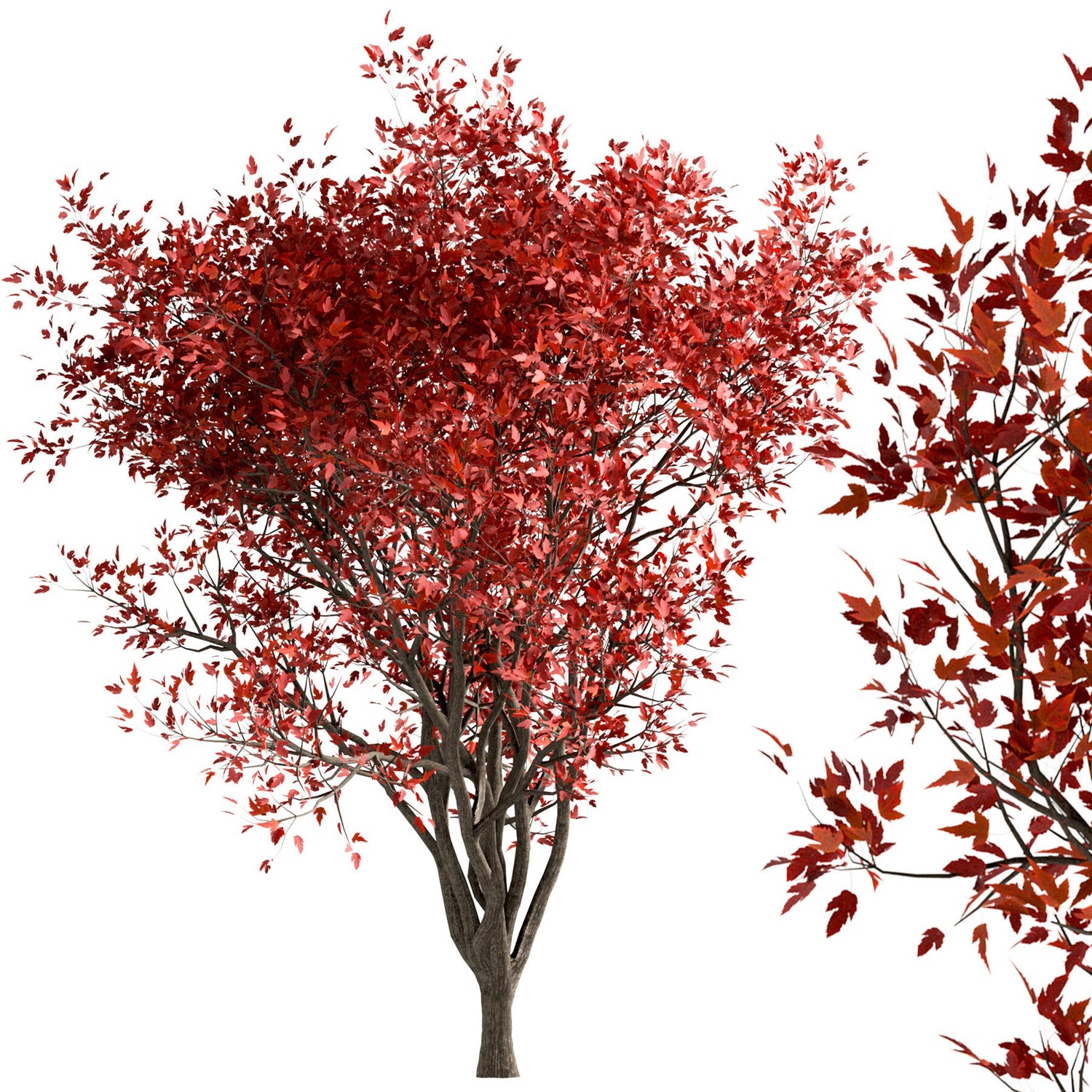
Amur maple (Acer ginnala)
The tree is native to North-East Asia - from Mongolia to the Amur River valley. A small maple tree. Height: 6m; width: 3m. Excellent drought and cold resistance, good for trimming. Leaves are purple in autumn. A popular greenery plant, especially under power lines due to its small size.
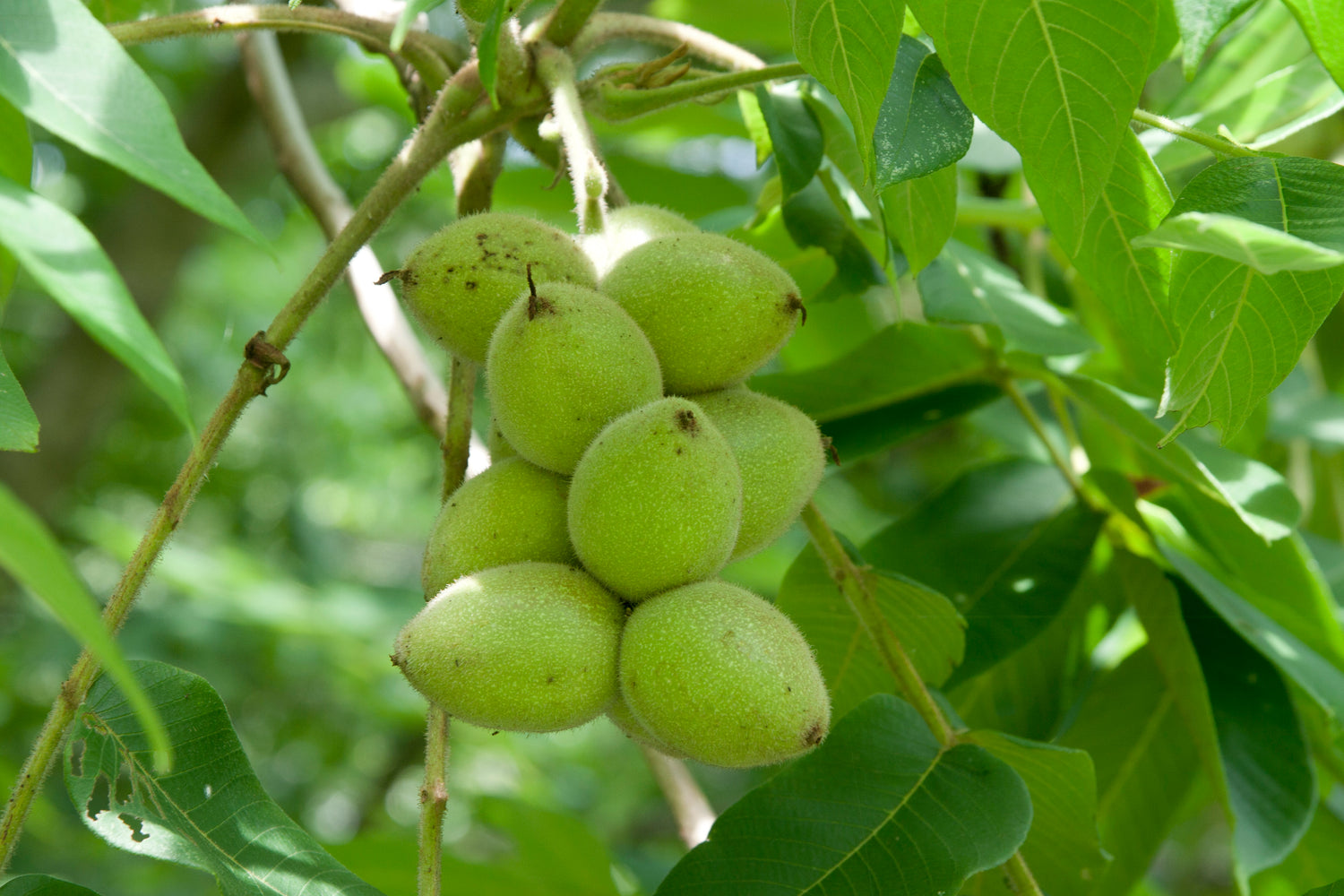
Manchurian walnut or Tigernut (Juglans mandshurica)
In the wild, this tree grows in the Far East, in the lower reaches of the Amur, in the northern part of Manchuria. The tree is winter-hardy and can withstand even -30C. In Latvia, the Manchurian walnut tree has been cultivated since the end of the 19th century, and it is often found in our parks and gardens. The tree is truly gorgeous, especially in the spring, when it develops beautiful long, flowering branches. The tree is very fast growing, begins to flower at the age of 6-8 years and produces many germinating seeds. The walnut tree has very high-quality wood, which is used in carpentry and making musical instruments, while the bark is used for wickerwork, but from the shell of the nut, tannins and brown color are obtained. Different parts of the plant are also used in medicine, for example, furunculosis is treated with fresh leaves by applying them to wounds; a very delicious medicinal jam is made from the green nuts when they are not yet fully ripe, usually in June. The walnut tree cleans the air from dust because it contains the bactericidal substance juglone (it has the smell of iodine), so it is suitable for urban greenery. The phytoncides secreted by walnut leaves also repel pests such as mosquitoes. For this reason, the walnut tree is a good ally in the recreational area of the garden.
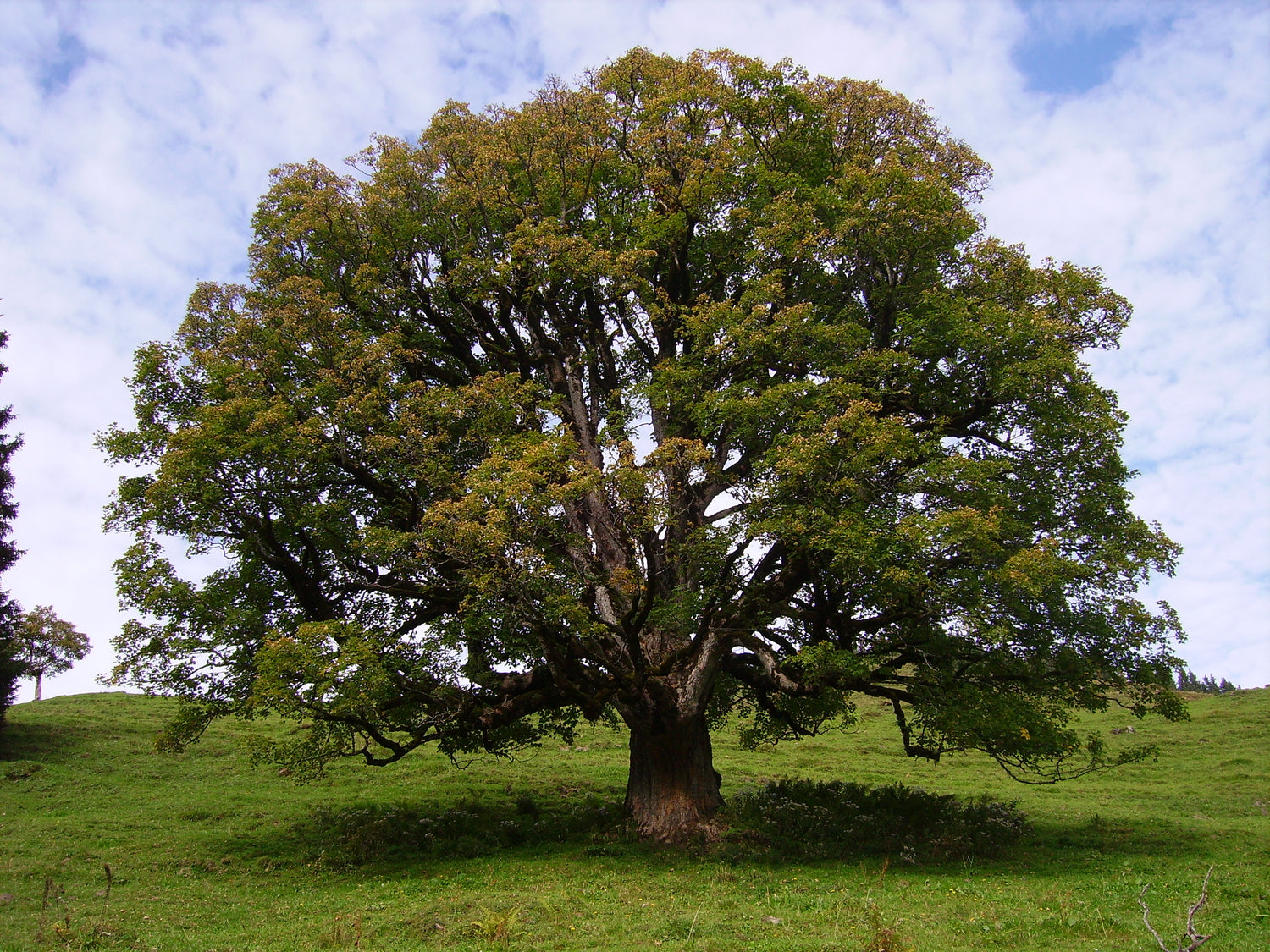
Sycamore maple (Acer pseudoplatanus)
Widespread in region from Central Europe to Western Asia. It grows to a height of 35m and lives up to 400 years. The crown forms a round shape. Wood is used for making musical instruments, furniture, wooden floors and kitchen utensils. It also makes good firewood.
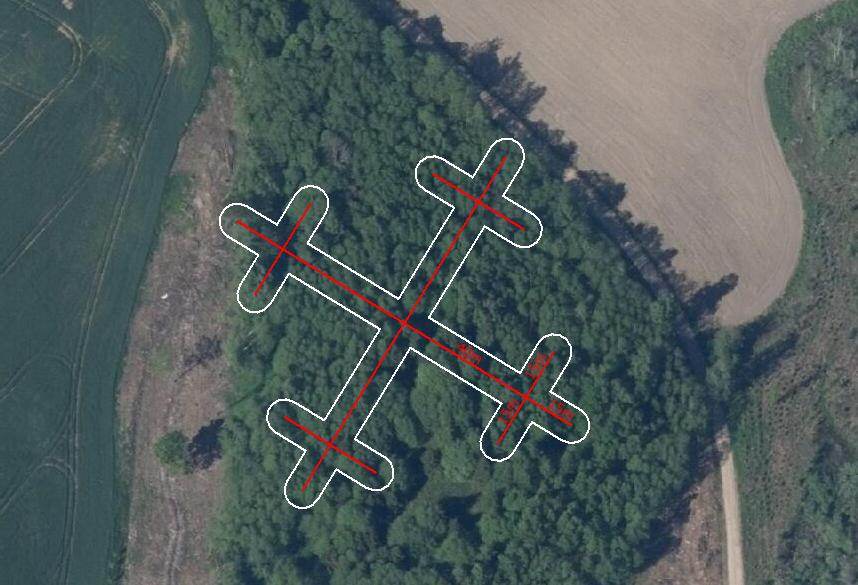
The Cross of Mara
In 2023, a large-scale nature object - the Cross of Mara - was created near the park. The sign is made of maples with fir trees arranged on both sides. The Cross of Mara symbolizes happiness, love and fire. It promotes femininity and prosperity. In years to come the object will be visible from a bird's-eye view (and a Google Maps photo), changing colors depending on the season, especially in autumn.

